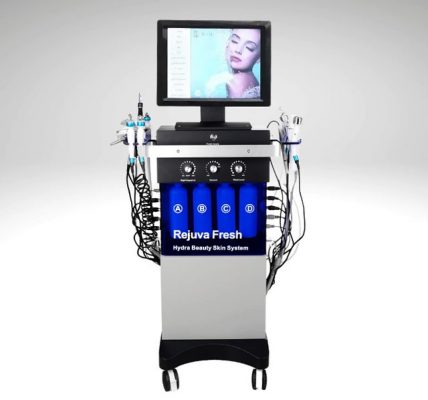Advantages of Using a Vacuum Emulsifier
Vacuum emulsifier is an easy non-preferred gadget equipment that requires a little bit of talent to learn its operations. It is a machine that is used to mix a mixture of water and oil.
It is widely used by cosmetic industries to manufacture body cream, skin lotions and lipstick. Pharmaceutical industries also use this equipment to process ointments, oral syrups, latex and emulsions.
1. High-Speed Mixing
Vacuum emulsifying mixers offer multiple mixing methods for products with varying viscosities in personal care, cosmetics, pharmaceutical and other industries. They also help with process efficiencies by providing quick turnaround and higher production capacity.
They can operate at temperatures up to 80 oC. They also have built-in cooling systems to ensure that the machine doesn’t overheat during long processes. The system also helps to prevent contamination and ensure consistent final products.
Another important feature of the vacuum emulsifier is that it can be used to conduct two-phase emulsification. This is particularly useful in the manufacture of medical products and industrial oils. In addition, it can eliminate the formation of flock deposits or bottom sediments that are difficult to dissolve in water. You can also reduce the size of material droplets, which can lower the density of the bulk phase. Another way to reduce bottom sediments is to conduct micro-aeration. This is a simple process that can be performed by adding more low-density liquids to the mixture or by lowering the temperature of the rotor.
2. High-Viscosity Materials
High-viscosity materials are among the most challenging to mix and can have a significant impact on product stability and durability. Mixing these products requires creating a turbulent flow within the mixing tank to ensure consistent homogeneity. High viscosity liquids tend to resist deformation, causing them to thicken and become more difficult to move. As a result, the high shear typically generated by traditional mixers can lead to material damage and heat generation, as well as increased power consumption and equipment stress and wear.
Unlike conventional mixers, the RAM technology uses low-contact Vacuum emulsifier forces to achieve effective mixing, regardless of the fluid’s viscosity. This eliminates the heat, friction, and particle damage associated with high-viscosity materials, and allows delicate or hazardous mixtures to be mixed without the risk of damage.
The rotor and stator of the vacuum emulsifier produce strong kinetic forces that propel materials into a narrow shear gap where they are cut, sheared, emulsified, and homogenized. This process takes place in seconds, producing hundreds of thousands of shears. Combined, this produces extremely strong and uniform forces, which are far more powerful than any force produced by the blades of a conventional mixer.
3. Low-Volume Mixing
A vacuum emulsifier can be used to make fluid products like cream and cough syrup. This type of mixer can also be used to prepare suppository medicine and help make oils with a lot of solids into emulsions. This machine is used in laboratories and small scale industries to test new solutions made with chemicals, natural ingredients and raw materials.
When this equipment is operating in a vacuum state, it can transfer components from the water and oil tanks into the emulsifying pot at high speed. Its agitator and scraper can eliminate the stickiness of the mixture on the wall of the pot. The PTFE scraper can also help reduce the chance of material staining and avoid dead corners.
This type of mixing equipment is an ideal choice for manufacturing cosmetics (skin, eye, hair and shampoo), pharmaceutical preparations (syrups, ointments and emulsions) and chemicals. This is because it can be easily adapted to a variety of applications. It can also be configured based on an individual’s requirements. The machine can also be built in accordance with CGMP requirements like Clean-in-place and sterilize-in-place to ensure safety for the product.
4. Low-Temperature Mixing
Vacuum emulsifying mixers can mix materials at low temperatures. This can save time and money, as well as reduce wastage. It can also improve product quality. In addition, it can help you achieve an enhanced turnaround, which means that you can get your products to market faster.
A vacuum emulsifier can be used for a variety of industries, including the automotive, cosmetics, and pharmaceuticals sectors. These machines are also useful in the production of polyesters and synthetic fibers, soaps, detergents, paints, and other coating fluids.
The machine works by heating the water and oil in separate pots, then sucking them into the main emulsifying tank through a narrow hose. The agitator blows the material to deform it, while scrapers eliminate any stickiness on the pot walls. The hose is connected to the vacuum pump, which creates a negative pressure inside the tank. Once the material reaches the target consistency, it is discharged from the hopper. The machine is equipped with safety valves and a pressure gauge for safe operation. It can handle batch sizes ranging from 20-3000 liters.
5. Low-Suction Mixing
A vacuum emulsifier provides several advantages to the product manufacturing process that Automation equipment supplier can directly result in enhanced profitability. It allows the company to speed up production, increase turnover and reduce wasted products. This ultimately increases the company’s sales volume and market potential.
This machine is also energy-efficient and less expensive to run than other mixing equipment. It saves on heating and cooling costs and uses fewer resources to produce the same amount of product. This helps to keep production costs down, which is beneficial to the manufacturing company and its customers.
The high-speed shear between the rotor and stator generates powerful suction force that pulls material into the gap. This creates strong tumbling turbulence that crushes, disperses and homogenizes materials.
A vacuum emulsifier is designed with safety features to protect the operator from harm while it’s operating. These include a safety valve, CIP cleaning system, break vacuum hole and pressure air inlet hole. It’s also easy to use and maintain. It’s important to know what the different types of emulsifying mixers are and how each one works before investing in one for your business.


